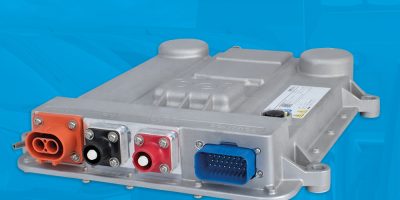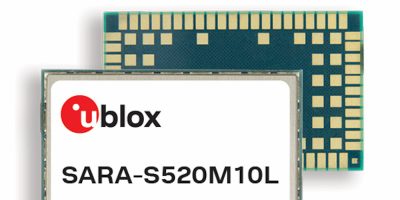Available in a reflowable package, the SmartSonic ICU-20201 ultrasonic ToF (time of flight) sensor has been designed by TDK in a miniature 3.5 x 3.5mm2 form factor.
It integrates a PMUT (piezoelectric micromachined ultrasonic transducer) with an low power SoC in the miniature package. Based on ultrasonic pulse-echo measurements, the ToF sensor provides millimeter-accurate and robust range measurements to targets at distances up to 5m over a wide and configurable field of view on any surface and under any lighting condition, said TDK. The company added that these results are possible in any lighting condition, including full sunlight, and independently of the target’s colour and optical transparency.
It also has a powerful embedded processor and extended memory space for high computational power, sufficient to allow complete application algorithms directly on the chip.
Typical applications are sensing accuracy in robotics, drones, smart homes or buildings and mobile devices. It can also be used in enterprise settings that require shelf inventory monitoring or level sensing, such as in smart homes or smart buildings.
Massimo Mascotto is director of product marketing at InvenSense, a TDK Group company. He said that the ICU-20201’s “increased computational capability enables smarter product design and an enhanced end user experience”.
The ICU-20201 is available now.
TDK was established in 1935 to commercialise ferrite, a key material in electronic and magnetic products. TDK‘s portfolio features passive components such as ceramic, aluminium electrolytic and film capacitors, as well as magnetics, high-frequency and piezo and protection devices. The company also provides sensors and sensor systems such as temperature and pressure, magnetic and MEMS sensors. In addition, TDK provides power supplies and energy devices and magnetic heads. These products are marketed under the product brands TDK, Epcos, InvenSense, Micronas, Tronics and TDK-Lambda.
TDK focuses on demanding markets in automotive, industrial and consumer electronics, and information and communication technology. The company has a network of design and manufacturing locations and sales offices in Asia, Europe, and in North and South America.
InvenSense is a TDK Group company and targets the consumer electronics and industrial areas with integrated motion, sound, pressure and ultrasonic solutions. InvenSense’s productss combine MEMS (micro electrical mechanical systems) sensors, such as accelerometers, gyroscopes, compasses, microphones, barometric pressure sensors, and ultrasonic time-of-flight sensors with proprietary algorithms and firmware that intelligently process, synthesise, and calibrate the output of sensors, maximising performance and accuracy. InvenSense’s motion tracking, ultrasonic, audio, fingerprint, location platforms and services can be found in mobile, wearables, smart home, industrial, automotive, IoT and robotics.
InvenSense became part of the MEMS sensors business group within the Sensor systems business of TDK in 2017. In April of 2022, Chirp Microsystems formally merged with InvenSense. InvenSense is headquartered in San Jose, California, USA and has offices worldwide.
https://invensense.tdk.com/







